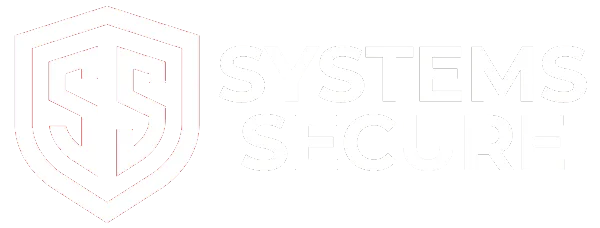Blog
Welcome to the Systems Secure Blog — your go-to resource for practical, no-fluff cybersecurity advice tailored for business owners and managers. Whether you're running a growing team or working with outsourced IT, we break down complex cyber risks into plain language and give you real-world solutions to protect your business, data, and reputation. From compliance guides and threat insights to expert tips on keeping your systems secure, we’ve got you covered.
🔒 Real advice. No jargon. Just smart, secure business.

DMARC and PCI DSS compliance
How DMARC Fits Into PCI DSS 4.0.1: Strengthening Email Security in the Fight Against Phishing
Discover how DMARC aligns with the latest PCI DSS 4.0.1 standards and why implementing it now can boost your organization's email security and compliance posture.
Let’s start with the basics.
DMARC stands for Domain-based Message Authentication, Reporting and Conformance — but don’t worry, it’s simpler than it sounds.
In plain English: DMARC is a security tool that protects your company’s email domain from being used by scammers. It stops criminals from sending fake emails that pretend to be from your business — the kind of emails that trick customers into handing over passwords, credit card numbers, or worse.
With DMARC, you get:
Control over who can send email using your company name
Protection against phishing attacks that could damage your reputation
Visibility into how your domain is being used or misused
And now, as part of PCI DSS 4.0.1, it’s not just a smart move — it’s a compliance requirement.
Why DMARC and PCI DSS Compliance Go Hand-in-Hand
With phishing and email spoofing still among the most common ways attackers breach organizations, PCI DSS v4.0.1 has placed new emphasis on anti-phishing technologies — especially DMARC. If you handle payment card data, aligning with these updates is vital.
PCI DSS 4.0.1 doesn't just recommend DMARC anymore — as of 31 March 2025, anti-phishing measures including DMARC, SPF, and DKIM are a formal requirement for PCI compliance. Ignoring them can now put your organization at risk of non-compliance.
What Is DMARC?
DMARC (Domain-based Message Authentication, Reporting, and Conformance) is an email validation system designed to protect your domain from being spoofed. When implemented alongside SPF and DKIM, it verifies that incoming email is from an authorized sender.
Benefits of DMARC:
Blocks impersonation of your domain
Reduces phishing attacks on your staff and customers
Provides insight into who’s sending emails on your behalf
PCI DSS 4.0.1: DMARC Is Now a Requirement
In PCI DSS v4.0.1, Requirement 5.4 introduces a crucial advancement in phishing protection. It specifically references the use of DMARC, SPF, and DKIM as recommended tools to authenticate email senders and block spoofing attempts:
"Using anti-spoofing controls such as DMARC, SPF, and DKIM will help stop phishers from spoofing the entity’s domain and impersonating personnel."
As of March 31, 2025, these email authentication measures are no longer optional — they are part of the official PCI DSS requirements. Any organization under the PCI umbrella must have appropriate anti-phishing controls in place, including protections against email spoofing.
Why You Should Prioritize DMARC Right Now
Even though the compliance date has arrived, many organizations are still scrambling to catch up. If you haven’t already, here’s why you should implement DMARC urgently:
You may already be a spoofing victim – Without DMARC, attackers can fake your domain in phishing attacks.
It enhances client trust – A visible DMARC policy shows your commitment to email security.
Auditors will ask for it – Expect your next PCI audit to require documented evidence of DMARC implementation.
DMARC Compliance Checklist for PCI DSS 4.0.1
If you're just getting started, follow these steps to meet the new requirement:
Implement SPF and DKIM – These must be working before you can enable DMARC.
Create and publish your DMARC policy – Start with
p=noneto monitor.Analyse incoming reports – Use tools to read DMARC XML reports and identify unauthorized senders.
Progressively enforce stricter policies – Move from
nonetoquarantinetoreject.Document everything – PCI auditors will want to see proof of implementation and review processes.
Going Beyond PCI: DMARC as a Best Practice
Compliance is one reason to deploy DMARC. But the broader benefit is resilience.
DMARC:
Protects your customers from fraudulent emails
Stops phishing from damaging your reputation
Helps prevent business email compromise (BEC)
In short: DMARC is a smart move for any business, PCI-regulated or not.
We also include full DMARC setup, monitoring, and reporting in our Security-in-a-Box package for clients — making PCI alignment much easier.
Need Help Getting DMARC Right?
Whether you’re preparing for an audit or locking down your domain for good, we’re here to help. We’ve helped dozens of UK businesses implement DMARC, pass PCI audits, and reduce phishing threats.
Contact us at 07588 455611 or email [email protected] to get started today.
✅ Summary: Key Points
PCI DSS 4.0.1 now requires DMARC and anti-phishing measures as of 31 March 2025.
DMARC prevents spoofing and improves email trust.
Start with SPF + DKIM, monitor with
p=none, then enforce.Document your DMARC setup for PCI audits.
DMARC is valuable for all businesses, not just for compliance.

Quick Links
©Systems Secure 2025
All Rights Reserved





